Natural satellite

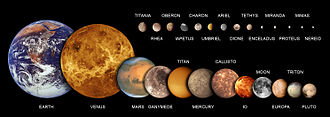
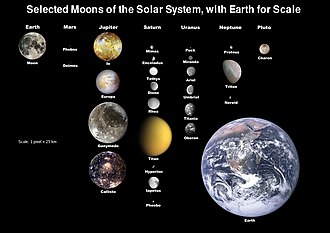
A natural satellite is in the most common usage, an astronomical body that orbits a planet, dwarf planet, or small solar system body (or sometimes another natural satellite). While natural satellites are often colloquially referred to as moons, there is only the Moon of Earth.
In the Solar System, there are six planetary satellite systems containing 205 known natural satellites. IAU-listed dwarf planets are also known to have natural satellites: Pluto, Haumea, Makemake, and Eris.[1] As of September 2018, there are 334 other minor planets known to have natural satellites.[2]
A planet usually has at least around 10000 times the mass of any natural satellites that orbit it, with a correspondingly much larger diameter.[3] The Earth–Moon system is the unique exception in the Solar System; at 3,474 km (2,158 miles) across, the Moon is 0.273 times the diameter of Earth.[4] The next largest ratios are the Neptune–Triton system at 0.055, the Saturn–Titan system at 0.044, the Jupiter–Ganymede system at 0.038, and the Uranus–Titania system at 0.031. For the category of planetoids, among the five that are known in the Solar System, Charon has the largest ratio, being 0.52 the diameter of Pluto.
Terminology[]
The first known natural satellite was the Moon, but it was considered a "planet" until Copernicus' introduction of De revolutionibus orbium coelestium in 1543. Until the discovery of the Galilean satellites in 1610 there was no opportunity for referring to such objects as a class. Galileo chose to refer to his discoveries as Planetæ ("planets"), but later discoverers chose other terms to distinguish them from the objects they orbited.[citation needed]
The first to use the term satellite to describe orbiting bodies was the German astronomer Johannes Kepler in his pamphlet Narratio de Observatis a se quatuor Iouis satellitibus erronibus ("Narration About Four Satellites of Jupiter Observed") in 1610. He derived the term from the Latin word satelles, meaning "guard", "attendant", or "companion", because the satellites accompanied their primary planet in their journey through the heavens.[5]
The term satellite thus became the normal one for referring to an object orbiting a planet, as it avoided the ambiguity of "moon". In 1957, however, the launching of the artificial object Sputnik created a need for new terminology.[5] The terms man-made satellite and artificial moon were very quickly abandoned in favor of the simpler satellite, and as a consequence, the term has become linked primarily with artificial objects flown in space – including, sometimes, even those not in orbit around a planet.[citation needed]
Because of this shift in meaning, the term moon, which had continued to be used in a generic sense in works of popular science and in fiction, has regained respectability and is now used interchangeably with natural satellite, even in scientific articles. When it is necessary to avoid both the ambiguity of confusion with Earth's natural satellite the Moon and the natural satellites of the other planets on the one hand, and artificial satellites on the other, the term natural satellite (using "natural" in a sense opposed to "artificial") is used. To further avoid ambiguity, the convention is to capitalize the word Moon when referring to Earth's natural satellite, but not when referring to other natural satellites.
Many authors define "satellite" or "natural satellite" as orbiting some planet or minor planet, synonymous with "moon" – by such a definition all natural satellites are moons, but Earth and other planets are not satellites.[6][7][8] A few recent authors define "moon" as "a satellite of a planet or minor planet", and "planet" as "a satellite of a star" – such authors consider Earth as a "natural satellite of the Sun".[9][10][11]
Definition of a moon[]

There is no established lower limit on what is considered a "moon". Every natural celestial body with an identified orbit around a planet of the Solar System, some as small as a kilometer across, has been considered a moon, though objects a tenth that size within Saturn's rings, which have not been directly observed, have been called moonlets. Small asteroid moons (natural satellites of asteroids), such as Dactyl, have also been called moonlets.[12]
The upper limit is also vague. Two orbiting bodies are sometimes described as a double planet rather than primary and satellite. Asteroids such as 90 Antiope are considered double asteroids, but they have not forced a clear definition of what constitutes a moon. Some authors consider the Pluto–Charon system to be a double (dwarf) planet. The most common[citation needed] dividing line on what is considered a moon rests upon whether the barycentre is below the surface of the larger body, though this is somewhat arbitrary, because it depends on distance as well as relative mass.
Origin and orbital characteristics[]

The natural satellites orbiting relatively close to the planet on prograde, uninclined circular orbits (regular satellites) are generally thought to have been formed out of the same collapsing region of the protoplanetary disk that created its primary.[13][14] In contrast, irregular satellites (generally orbiting on distant, inclined, eccentric and/or retrograde orbits) are thought to be captured asteroids possibly further fragmented by collisions. Most of the major natural satellites of the Solar System have regular orbits, while most of the small natural satellites have irregular orbits.[15] The Moon[16] and possibly Charon[17] are exceptions among large bodies in that they are thought to have originated by the collision of two large proto-planetary objects (see the giant impact hypothesis). The material that would have been placed in orbit around the central body is predicted to have reaccreted to form one or more orbiting natural satellites. As opposed to planetary-sized bodies, asteroid moons are thought to commonly form by this process. Triton is another exception; although large and in a close, circular orbit, its motion is retrograde and it is thought to be a captured dwarf planet.
Temporary satellites[]
The capture of an asteroid from a heliocentric orbit is not always permanent. According to simulations, temporary satellites should be a common phenomenon.[18][19] The only observed examples are 1991 VG, 2006 RH120, 2020 CD3.
2006 RH120 was a temporary satellite of Earth for nine months in 2006 and 2007.[20][21]
Tidal locking[]
Most regular moons (natural satellites following relatively close and prograde orbits with small orbital inclination and eccentricity) in the Solar System are tidally locked to their respective primaries, meaning that the same side of the natural satellite always faces its planet. This phenomenon comes about through a loss of energy due to tidal forces raised by the planet, slowing the rotation of the satellite until it is negligible.[22] The only known exception is Saturn's natural satellite Hyperion, which rotates chaotically because of the gravitational influence of Titan.
In contrast, the outer natural satellites of the giant planets (irregular satellites) are too far away to have become locked. For example, Jupiter's Himalia, Saturn's Phoebe, and Neptune's Nereid have rotation periods in the range of ten hours, whereas their orbital periods are hundreds of days.
Satellites of satellites[]
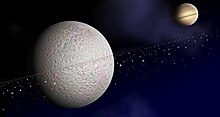
No "moons of moons" or subsatellites (natural satellites that orbit a natural satellite of a planet) are currently known. In most cases, the tidal effects of the planet would make such a system unstable.
However, calculations performed after the 2008 detection[23] of a possible ring system around Saturn's moon Rhea indicate that satellites orbiting Rhea could have stable orbits. Furthermore, the suspected rings are thought to be narrow,[24] a phenomenon normally associated with shepherd moons. However, targeted images taken by the Cassini spacecraft failed to detect rings around Rhea.[25]
It has also been proposed that Saturn's moon Iapetus had a satellite in the past; this is one of several hypotheses that have been put forward to account for its equatorial ridge.[26]
Trojan satellites[]
Two natural satellites are known to have small companions at both their L4 and L5 Lagrangian points, sixty degrees ahead and behind the body in its orbit. These companions are called trojan moons, as their orbits are analogous to the trojan asteroids of Jupiter. The trojan moons are Telesto and Calypso, which are the leading and following companions, respectively, of the Saturnian moon Tethys; and Helene and Polydeuces, the leading and following companions of the Saturnian moon Dione.
Asteroid satellites[]
The discovery of 243 Ida's natural satellite Dactyl in the early 1990s confirmed that some asteroids have natural satellites; indeed, 87 Sylvia has two. Some, such as 90 Antiope, are double asteroids with two comparably sized components.
Shape[]

Neptune's moon Proteus is the largest irregularly shaped natural satellite. All other known natural satellites that are at least the size of Uranus's Miranda have lapsed into rounded ellipsoids under hydrostatic equilibrium, i.e. are "round/rounded satellites". The larger natural satellites, being tidally locked, tend toward ovoid (egg-like) shapes: squat at their poles and with longer equatorial axes in the direction of their primaries (their planets) than in the direction of their motion. Saturn's moon Mimas, for example, has a major axis 9% greater than its polar axis and 5% greater than its other equatorial axis. Methone, another of Saturn's moons, is only around 3 km in diameter and visibly egg-shaped. The effect is smaller on the largest natural satellites, where their own gravity is greater relative to the effects of tidal distortion, especially those that orbit less massive planets or, as in the case of the Moon, at greater distances.
| Name | Satellite of | Difference in axes | |
|---|---|---|---|
| km | % of mean
diameter | ||
| Mimas | Saturn | 33.4 (20.4 / 13.0) | 8.4 (5.1 / 3.3) |
| Enceladus | Saturn | 16.6 | 3.3 |
| Miranda | Uranus | 14.2 | 3.0 |
| Tethys | Saturn | 25.8 | 2.4 |
| Io | Jupiter | 29.4 | 0.8 |
| The Moon | Earth | 4.3 | 0.1 |
Geological activity[]
This section does not cite any sources. (December 2013) |
Of the nineteen known natural satellites in the Solar System that are large enough to have lapsed into hydrostatic equilibrium, several remain geologically active today. Io is the most volcanically active body in the Solar System, while Europa, Enceladus, Titan and Triton display evidence of ongoing tectonic activity and cryovolcanism. In the first three cases, the geological activity is powered by the tidal heating resulting from having eccentric orbits close to their giant-planet primaries. (This mechanism would have also operated on Triton in the past, before its orbit was circularized.) Many other natural satellites, such as Earth's Moon, Ganymede, Tethys and Miranda, show evidence of past geological activity, resulting from energy sources such as the decay of their primordial radioisotopes, greater past orbital eccentricities (due in some cases to past orbital resonances), or the differentiation or freezing of their interiors. Enceladus and Triton both have active features resembling geysers, although in the case of Triton solar heating appears to provide the energy. Titan and Triton have significant atmospheres; Titan also has hydrocarbon lakes. Also Io and Callisto have atmospheres, even if they are extremely thin.[27] Four of the largest natural satellites, Europa, Ganymede, Callisto, and Titan, are thought to have subsurface oceans of liquid water, while smaller Enceladus may have localized subsurface liquid water.
Natural satellites of the Solar System[]

Of the objects within our Solar System known to have natural satellites, there are 76 in the asteroid belt (five with two each), four Jupiter trojans, 39 near-Earth objects (two with two satellites each), and 14 Mars-crossers.[2] There are also 84 known natural satellites of trans-Neptunian objects.[2] Some 150 additional small bodies have been observed within the rings of Saturn, but only a few were tracked long enough to establish orbits. Planets around other stars are likely to have satellites as well, and although numerous candidates have been detected to date, none have yet been confirmed.
Of the inner planets, Mercury and Venus have no natural satellites; Earth has one large natural satellite, known as the Moon; and Mars has two tiny natural satellites, Phobos and Deimos. The giant planets have extensive systems of natural satellites, including half a dozen comparable in size to Earth's Moon: the four Galilean moons, Saturn's Titan, and Neptune's Triton. Saturn has an additional six mid-sized natural satellites massive enough to have achieved hydrostatic equilibrium, and Uranus has five. It has been suggested that some satellites may potentially harbour life.[28]
Among the identified dwarf planets, Ceres has no known natural satellites. Pluto has the relatively large natural satellite Charon and four smaller natural satellites; Styx, Nix, Kerberos, and Hydra.[29] Haumea has two natural satellites, and Eris and Makemake have one each. The Pluto–Charon system is unusual in that the center of mass lies in open space between the two, a characteristic sometimes associated with a double-planet system.
The seven largest natural satellites in the Solar System (those bigger than 2,500 km across) are Jupiter's Galilean moons (Ganymede, Callisto, Io, and Europa), Saturn's moon Titan, Earth's moon, and Neptune's captured natural satellite Triton. Triton, the smallest of these, has more mass than all smaller natural satellites together. Similarly in the next size group of nine mid-sized natural satellites, between 1,000 km and 1,600 km across, Titania, Oberon, Rhea, Iapetus, Charon, Ariel, Umbriel, Dione, and Tethys, the smallest, Tethys, has more mass than all smaller natural satellites together. As well as the natural satellites of the various planets, there are also over 80 known natural satellites of the dwarf planets, minor planets and other small Solar System bodies. Some studies estimate that up to 15% of all trans-Neptunian objects could have satellites.
The following is a comparative table classifying the natural satellites in the Solar System by diameter. The column on the right includes some notable planets, dwarf planets, asteroids, and trans-Neptunian objects for comparison. The natural satellites of the planets are named after mythological figures. These are predominantly Greek, except for the Uranian natural satellites, which are named after Shakespearean characters. The nineteen bodies massive enough to have achieved hydrostatic equilibrium are in bold in the table below. Minor planets and satellites suspected but not proven to have achieved a hydrostatic equilibrium are italicized in the table below.
| Mean diameter (km) |
Satellites of planets | Satellites of dwarf planets | Satellites of other minor planets |
Non-satellites for comparison | ||||||||
|---|---|---|---|---|---|---|---|---|---|---|---|---|
| Earth | Mars | Jupiter | Saturn | Uranus | Neptune | Pluto | Makemake | Haumea | Eris | |||
| 4,000–6,000 | Ganymede Callisto |
Titan | Mercury | |||||||||
| 3,000–4,000 | Moon | Io Europa |
||||||||||
| 2,000–3,000 | Triton | Eris Pluto | ||||||||||
| 1,000–2,000 | Rhea Iapetus Dione Tethys |
Titania Oberon Umbriel Ariel |
Charon | Makemake Haumea Gonggong, Quaoar | ||||||||
| 500–1,000 | Enceladus | Dysnomia | Sedna, Ceres, Salacia, Orcus, Pallas, Vesta many more TNOs | |||||||||
| 250–500 | Mimas Hyperion |
Miranda | Proteus Nereid |
Hiʻiaka | Orcus I Vanth Varda I Ilmarë Salacia I Actaea |
10 Hygiea 704 Interamnia 87 Sylvia and many others | ||||||
| 100–250 | Amalthea Himalia Thebe |
Phoebe Janus Epimetheus |
Sycorax Puck Portia |
Larissa Galatea Despina |
S/2015 (136472) 1 | Namaka | S/2005 (82075) 1 Sila–Nunam I Ceto I Phorcys Patroclus I Menoetius ~21 more moons of TNOs |
3 Juno 15760 Albion 5 Astraea 42355 Typhon and many others | ||||
| 50–100 | Elara Pasiphae |
Prometheus Pandora |
Caliban Juliet Belinda Cressida Rosalind Desdemona Bianca |
Thalassa Halimede Neso Naiad |
Quaoar I Weywot 90 Antiope I Typhon I Echidna Logos I Zoe 5 more moons of TNOs |
90 Antiope 58534 Logos 253 Mathilde and many others | ||||||
| 25–50 | Carme Metis Sinope Lysithea Ananke |
Siarnaq Helene Albiorix Atlas Pan |
Ophelia Cordelia Setebos Prospero Perdita Stephano |
Sao Laomedeia Psamathe Hippocamp |
Hydra Nix[30] |
Kalliope I Linus | 1036 Ganymed 243 Ida and many others | |||||
| 10–25 | Phobos Deimos |
Leda Adrastea |
Telesto Paaliaq Calypso Ymir Kiviuq Tarvos Ijiraq Erriapus |
Mab Cupid Francisco Ferdinand Margaret Trinculo |
Kerberos Styx |
762 Pulcova I Sylvia I Romulus 624 Hektor I Skamandrios Eugenia I Petit-Prince 121 Hermione I 283 Emma I 1313 Berna I 107 Camilla I |
433 Eros 1313 Berna and many others | |||||
| < 10 | 63 moons | 56 moons | Sylvia II Remus Ida I Dactyl and many others |
many | ||||||||
Visual summary[]
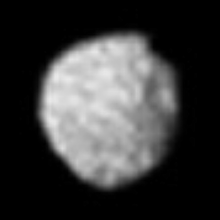
 |
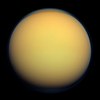 |
 |
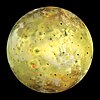 |
 |
 |
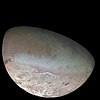 |
| Ganymede (moon of Jupiter) |
Titan (moon of Saturn) |
Callisto (moon of Jupiter) |
Io (moon of Jupiter) |
Moon (moon of Earth) |
Europa (moon of Jupiter) |
Triton (moon of Neptune) |
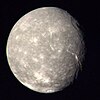 |
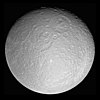 |
 |
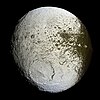 |
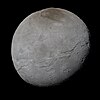 |
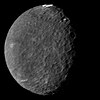 |
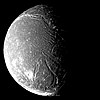 |
| Titania (moon of Uranus) |
Rhea (moon of Saturn) |
Oberon (moon of Uranus) |
Iapetus (moon of Saturn) |
Charon (moon of Pluto) |
Umbriel (moon of Uranus) |
Ariel (moon of Uranus) |
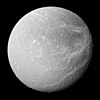 |
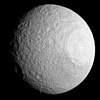 |
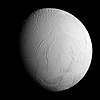 |
 |
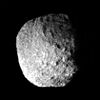 |
 |
 |
| Dione (moon of Saturn) |
Tethys (moon of Saturn) |
Enceladus (moon of Saturn) |
Miranda (moon of Uranus) |
Proteus (moon of Neptune) |
Mimas (moon of Saturn) |
Hyperion (moon of Saturn) |
 |
 |
 |
 |
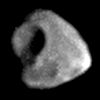 |
 |
 |
| Phoebe (moon of Saturn) |
Janus (moon of Saturn) |
Amalthea (moon of Jupiter) |
Epimetheus (moon of Saturn) |
Thebe (moon of Jupiter) |
Prometheus (moon of Saturn) |
Pandora (moon of Saturn) |
 |
 |
 |
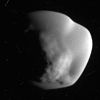 |
 |
 |
 |
| Hydra (moon of Pluto) |
Nix (moon of Pluto) |
Helene (moon of Saturn) |
Atlas (moon of Saturn) |
Pan (moon of Saturn) |
Telesto (moon of Saturn) |
Calypso (moon of Saturn) |
 |
 |
 |
 |
 |
||
| Phobos (moon of Mars) |
Deimos (moon of Mars) |
Daphnis (moon of Saturn) |
Methone (moon of Saturn) |
Dactyl (moon of Ida) |
[Puck (moon) Puck]] (moon of Uranus) |
|

See also[]
- Circumplanetary disk – Accumulation of matter around a planet
- Co-orbital moon
- Exomoon – Moon beyond the Solar System
- Inner moon – Natural satellite orbiting inside the orbit of a larger moon
- Irregular moon – Captured satellite following an irregular orbit
- List of natural satellites
- Naming of moons
- Quasi-satellite
- Subsatellite – A satellite that orbits a natural satellite (aka Moonmoon)
- Timeline of discovery of Solar System planets and their moons
- Trojan moon
- Tug of war (astronomy) – ratio of gravitational forces on a satellite from the Sun and host planet
Moons of planets[]
- The Moon, Earth's natural satellite
- Moons of Mars
- Moons of Jupiter
- Moons of Saturn
- Moons of Uranus
- Moons of Neptune
Moons of dwarf planets and small Solar System bodies[]
- Minor-planet moon
- Moons of Pluto
- Dysnomia, Eris's natural satellite
- Moons of Haumea
- S/2015 (136472) 1, Makemake's natural satellite
References[]
- ^ "Planet and Satellite Names and Discoverers". International Astronomical Union (IAU) Working Group for Planetary System Nomenclature (WGPSN). Retrieved 27 January 2012.
- ^ Jump up to: a b c Wm. Robert Johnston (30 September 2018). "Asteroids with Satellites". Johnston's Archive. Retrieved 22 October 2018.
- ^ Canup, Robin M.; Ward, William R. (June 2006). "A common mass scaling for satellite systems of gaseous planets". Nature. 441 (7095): 834–839. Bibcode:2006Natur.441..834C. doi:10.1038/nature04860. ISSN 1476-4687. PMID 16778883. S2CID 4327454.
- ^ Glenday, Craig (2014). Guinness World Records 2014. p. 186. ISBN 978-1-908843-15-9.
- ^ Jump up to: a b "Early History – First Satellites". www.jpl.nasa.gov. Retrieved 8 February 2018.
- ^ Kenneth R. Lang. "The Cambridge Guide to the Solar System". 2011. p. 15. quote: "Any object that orbits a planet is now called a satellite, and a natural satellite is also now called a moon."
- ^ Therese Encrenaz, et al. "The Solar System". 2004. p. 30.
- ^ Tilman Spohn, Doris Breuer, Torrence Johnson. "Encyclopedia of the Solar System". 2014. p. 18.
- ^ David Andrew Weintraub. "Is Pluto a Planet?: A Historical Journey Through the Solar System". p. 65 quote: "... the general concept of a "moon" as a satellite of a planet and "planet" as a satellite of a star."
- ^ "Satellite". www.merriam-webster.com. Merriam Webster. Retrieved 16 November 2015.
- ^ Stillman, Dan (16 June 2015). "What Is a Satellite?". www.nasa.gov. NASA. Retrieved 16 November 2015.
- ^ F. Marchis, et al. (2005). "Discovery of the triple asteroidal system 87 Sylvia". Nature. 436 (7052): 822–24. Bibcode:2005Natur.436..822M. doi:10.1038/nature04018. PMID 16094362. S2CID 4412813.
- ^ Canup, Robin M.; Ward, William R. (30 December 2008). Origin of Europa and the Galilean Satellites. University of Arizona Press. p. 59. arXiv:0812.4995. Bibcode:2009euro.book...59C. ISBN 978-0-8165-2844-8.
- ^ D'Angelo, G.; Podolak, M. (2015). "Capture and Evolution of Planetesimals in Circumjovian Disks". The Astrophysical Journal. 806 (1): 29–. arXiv:1504.04364. Bibcode:2015ApJ...806..203D. doi:10.1088/0004-637X/806/2/203. S2CID 119216797.
- ^ Encyclopedia of the Solar System, page 366, Academic Press, 2007, Lucy-Ann Adams McFadden, Paul Robert Weissman, Torrence V. Johnson
- ^ Canup, RM & Asphaug, E (2001). "Origin of the Moon in a giant impact near the end of the Earth's formation". Nature. 412 (6848): 708–12. Bibcode:2001Natur.412..708C. doi:10.1038/35089010. PMID 11507633. S2CID 4413525.
- ^ Stern, SA; Weaver, HA; Steffl, AJ; Mutchler, MJ; et al. (2006). "A giant impact origin for Pluto's small natural satellites and satellite multiplicity in the Kuiper belt". Nature. 439 (7079): 946–49. Bibcode:2006Natur.439..946S. doi:10.1038/nature04548. PMID 16495992. S2CID 4400037.
- ^ Camille M. Carlisle (30 December 2011). "Pseudo-moons Orbit Earth". Sky & Telescope.
- ^ Fedorets, Grigori; Granvik, Mikael; Jedicke, Robert (15 March 2017). "Orbit and size distributions for asteroids temporarily captured by the Earth-Moon system". Icarus. 285: 83–94. Bibcode:2017Icar..285...83F. doi:10.1016/j.icarus.2016.12.022.
- ^ "2006 RH120 ( = 6R10DB9) (A second moon for the Earth?)". Great Shefford Observatory. 14 September 2017. Archived from the original on 6 February 2015. Retrieved 13 November 2017.
- ^ Roger W. Sinnott (17 April 2007). "Earth's "Other Moon"". Sky & Telescope. Archived from the original on 2 April 2012. Retrieved 12 March 2018.
- ^ Barnes, Rory, ed. (2010). Formation and Evolution of Exoplanets. John Wiley & Sons. p. 248. ISBN 978-3527408962.
- ^ Jones, G. H.; et al. (2008). "The Dust Halo of Saturn's Largest Icy Moon, Rhea – Jones et al. 319 (5868): 1380 – Science" (PDF). Science. 319 (5868): 1380–1384. Bibcode:2008Sci...319.1380J. doi:10.1126/science.1151524. PMID 18323452. S2CID 206509814. Archived from the original (PDF) on 8 March 2018.
- ^ Jeff Hecht (6 March 2008). "Saturn satellite reveals first moon rings". New Scientist.
- ^ Tiscareno, Matthew S.; Burns, Joseph A.; Cuzzi, Jeffrey N.; Hedman, Matthew M. (2010). "Cassini imaging search rules out rings around Rhea – Tiscareno – 2010". Geophysical Research Letters. 37 (14): n/a. arXiv:1008.1764. Bibcode:2010GeoRL..3714205T. doi:10.1029/2010GL043663.
- ^ "How Iapetus, Saturn's outermost moon, got its ridge". 13 December 2010.
- ^ A moon with atmosphere | The Planetary Society
- ^ Woo, Marcus (27 January 2015). "Why We're Looking for Alien Life on Moons, Not Just Planets". Wired. Retrieved 27 January 2015.
- ^ "Hubble Discovers New Pluto Moon". ESA/Hubble Press Release. Retrieved 13 July 2012.
- ^ "How Big Is Pluto? New Horizons Settles Decades-Long Debate". NASA. 13 July 2015.
External links[]
| Wikimedia Commons has media related to Natural satellites. |
All moons[]
- Natural Satellite Physical Parameters (JPL-NASA, with refs – last updated July 2006)
- Moons of the Solar System (The Planetary Society, as of March 2009)
- The JPL's Solar System Dynamics page
- "How Many Solar System Bodies". NASA/JPL Solar System Dynamics. Retrieved 26 January 2012.
- Planetary Names: Planet and Satellite Names and Discoverers
- "Upper size limit for moons explained" Kelly Young. Nature (vol 441, p. 834) 14 June 2006
- Images of planets and major moons (not to scale)
- The Planetary Society – Moon Montage(s)
- Album of moon images by Kevin M. Gill
- The Atlas of Moons by the National Geographic Society
Jupiter's moons[]
- Sheppard, Scott S. "The Jupiter Satellite and Moon Page". Department of Terrestrial Magnetism at Carnegie Institution for Science. Retrieved 8 March 2018.
- Outer Satellites Discovered Around Jupiter in 2002 Scott S. Sheppard
- New Satellites of Jupiter Discovered in 2003 Scott S. Sheppard
Saturn's moons[]
- Satellite-hunters find four new moons of the planet Saturn David Brand | 26 October 2000
- Saturn's New Satellite S/2003 S1 Scott S. Sheppard
- Solar System
- Moons

